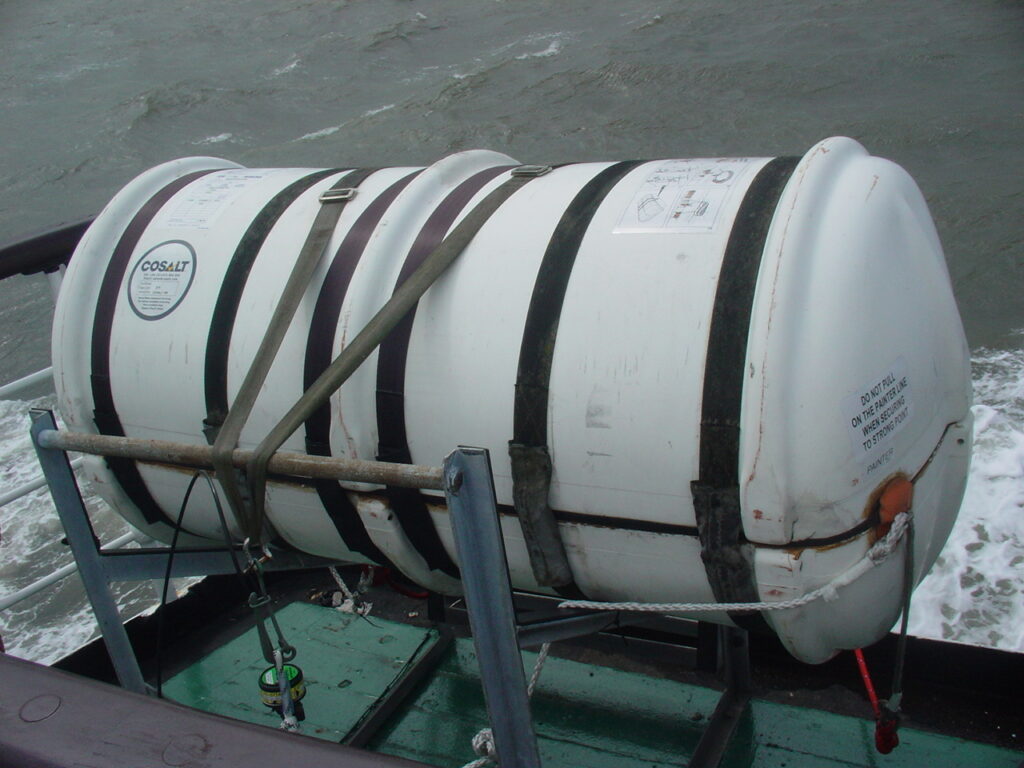Life Saving Appliances onboard ship
In this article we will discuss about the life saving appliances onboard ship and regulations regarding the same.
What are Life Saving Appliances onboard ship :
(1) Life saving appliances are used by the ship’s crew, in case of any emergency situation onboard ship.
(2) The SOLAS convention makes it mandatory for all the ships to carry the life saving appliances onboard them.
(3) The criteria related to the manufacturing, maintenance and record keeping of the life saving appliances is given in the Life Saving Appliances (LSA) code of the SOLAS convention.
(4) Their number and type varies from ship to ship.
Life Saving Appliances onboard ship :
The life saving appliances mandatory to carry onboard ships are –
(1) Life jackets :
The ship must carry sufficient number of life jackets which are enough for the ship’s crew.
The life jackets are kept at –
- In the cabin of each crew member
- At the primary fire station
- At the secondary fire station
- On the bridge
- In the cargo control room
- In the engine control room
- In the forward bosun store
Whenever the General alarm sounds, the crew members must don the life jackets and then should proceed towards the muster station.
(2) Immersion suits :
The immersion suits available onboard ships should be enough to accommodate all the crew members.
The immersion suits are also present on all the locations where the life jackets are kept.
Upon hearing the general alarm or fire alarm, the crew members should carry the immersion suits along with the life jackets and should proceed towards the muster station.
(3) Life boats :
The merchant navy ships must carry two life boats onboard ship.
The capacity of each life boat should be such that it should be able to carry all the crew members mentioned in the muster list.
The position of the life boats is on the upper deck, near the accommodation, each on port and starboard side.
(4) Rescue boat :
The ship should carry a rescue boat which fulfils all the requirements mentioned in the SOLAS.
The ship’s one life boat can also act as a rescue boat provided that it satisfies all the SOLAS requirements.
(5) Life rafts :
The life rafts are provided onboard ship on following locations –
- Near port side lifeboat
- Near starboard side lifeboat
- On poop deck
- On forward deck
They should open automatically in event of sinking of the ship.
(6) Life buoys :
The life buoys are ring like buoyant devices.
These are present on both sides on all the decks of the ship which are open to sea.
(7) Hand held flares :
These are the means of attracting the attention.
There should be minimum 6 flares of this type on the bridge of the ship.
Both the life boats should have at least 6 hand held flares each.
(8) Rocket parachute flares :
The bridge should have at least 12 rocket parachute flares.
Both life boats must have at least 4 rocket parachute flares each.
(9) Buoyant smoke signals :
Each life boat should have at least 2 buoyant smoke signals capable of giving smoke signal upto at least 3 minutes.
Also read : Procedure of crew change in Merchant Navy.
(10) Public Address system :
This is an important communication tool of the ship.
The sound of public address system should be audible all over the ship.
This system helps in making various important and emergency announcements.
(11) General Emergency Alarm System :
The signal of the general emergency alarm is 7 short blasts followed by a long blast on the ship’s horn or bell.
The use of this is to signal various emergencies like fire, abandon ship and grounding.
(12) Line throwing apparatus :
The ship should have at least one line throwing apparatus or LTA capable of throwing upto 230 meters in calm weather.
(13) EPIRB :
EPIRB stands for Emergency Position Indicating Radio Beacon.
This gives a distress signal in case of emergency.
All the small ships must carry at least one EPIRB whereas all the large ships must carry at least two EPIRBs.
(14) Self Contained Breathing Apparatus (SCBA) :
The use of self contained breathing apparatus is for emergency rescue operations and during fire fighting operations.
The 2 SCBA sets and spare bottles are kept at primary fire station and 2 sets with spare bottles are also kept at secondary fire station.
There should also be breathing air compressor present onboard ships to charge these spare SCBA cylinders.
There should be a warning alarm for the wearer in case of low amount of air inside the cylinder.
Hello. This is Alkesh Patil. I am a Marine Engineer with 10+ years of experience in Merchant Navy. In this blog, I will try to provide some basic information about merchant navy and life onboard ship.
image sources



